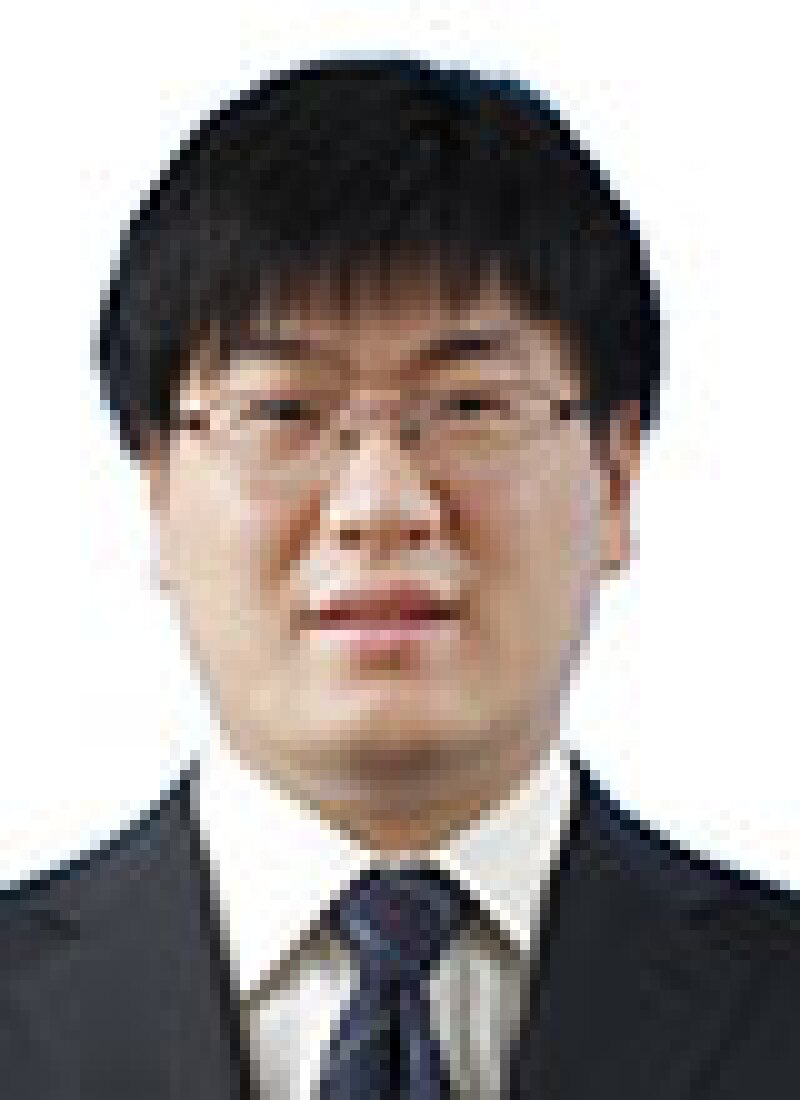
On June 23 2016, in a large office building that stands out from nearby residential compounds, a civil complaint was submitted before a judge of the Case Filing Chamber of Beijing Intellectual Property (IP) Court against Meizu, a famous mobile phone manufacturer in southern China.
It was not the first time that this has happened this year. A month ago, Shenzhen Intermediate People's Court accepted several infringement lawsuits against another major company in the mobile phone industry. The lawsuits filed in the two cities were similar not only because the defendants were both producing mobile phones but also because standard essential patents (SEPs) were involved.
In recent years, China has seen more disputes related to patent infringement. Many companies opt to protect their rights and interests by judicial measures. For SEPs, there have been typical cases such as Huawei vs ZTE, Huawei vs InterDigital Corporation (IDC), and Nokia vs Huaqin. The recent lawsuits in Shenzhen and Beijing have made SEP a hot topic.
When it comes to SEPs, definition is the first question to answer. How to define a SEP has a significant impact on the formulation and implementation of all technical standards. However, there is no consensus in current judicial practice in China.
Generally speaking, in determining whether a patented technology is standard essential, three factors are considered: the technical factor, the commercial factor, and the legal factor.
The technical factor
The technical factor concerns how indispensable a patented technology is in the related technical standard. This is the primary factor in determining an essential patent.
The indispensability of a patent in terms of technical implementation has made the technical factor the first thing to be considered. In the meantime, the purpose of establishing technical standards is to implement specific technical objectives by choosing advanced and feasible technologies. This means that the technical factor should always be considered.
The commercial factor
The commercial factor is focused on the commercial feasibility of incorporating a patented technology into a technical standard. The main consideration is whether the cost for doing so is reasonable. If it is evaluated to be very expensive, the technology is apparently not commercially feasible.
Domestic scholars have long referred to the definitions of SEP adopted by major international standard organisations. As to whether or not the commercial factor should be considered in determining an essential patent, international standard organisations have different policies.
|
|
"When it comes to SEPs, definition is the first question to answer" |
|
|
The Institute of Electrical and Electronics Engineers Standards Association (IEEE-SA) defines an essential patent claim as "any Patent Claim the practice of which was necessary to implement either a mandatory or optional portion of a normative clause of the IEEE Standard when, at the time of the IEEE Standard's approval, there was no commercially and technically feasible non-infringing alternative implementation method for such mandatory or optional portion of the normative clause" (IEEE-SA Standards Board Bylaws, Section 6.1, December 2015).
Meanwhile, the European Telecommunications Standards Institute (ETSI) interprets the meaning of the term "essential" [of a standard essential patent] as "[it is] not possible on technical (but not commercial) grounds, taking into account normal technical practice and the state of the art generally available at the time of standardisation, to make, sell, lease, otherwise dispose of, repair, use or operate EQUIPMENT or METHODS which comply with a STANDARD without infringing [it]" (ETSI Rules of Procedure, page 41, April 2016).
The legal factor
The legal factor is related to a potential essential patent's compliance with legal requirements and whether it can be legally protected. The legal factor mainly comprises the following aspects:
Territoriality and timeliness of the patent;
Content of the patent prescribed by the law; and
Status of the patent.
Scholars in China can be roughly divided into two factions according to their criteria for determining an essential patent: those who consider the commercial factor and those who don't.
People with the first point of view hold that, in addition to the technical and legal factors, the commercial factor should also be considered in determining an essential patent as there have been de facto standards widely applied in business practice resulting from market competition, which should be respected.
Some have argued that it is only the technical factor that serves to make sure the technology recognised as an essential patent is indispensable. The legal factor helps to rule out invalid patents so as to avoid their use and licensing in business frauds through the abuse of SEPs. However, there is a fundamental conflict between the commercial factor and the technical factor, which may result in repression and restriction of competition between standards. Therefore, according to them, the commercial factor cannot serve as a criterion in determining essential patents and should be ignored.
In the administrative field, the Rules for the Inclusion of Patents in National Standards (Draft for comments) (the Rules) issued by the Standardisation Administration of China (SAC) and the State Intellectual Property Office (SIPO) in January 2010 prescribed the definition of essential patent as "A patent having a certain claim which cannot be prevented from infringement by using a commercially feasible non-infringing implementation when the standard is practised".
The Rules adopted for determining an essential patent a composite criterion comprising both technical and commercial factors by prescribing that it should be determined on the basis of compliance with both technical requirements and "commercial feasibility".
In a comment to the Rules, the Japanese Chamber of Commerce and Industry in China pointed out that the expression "commercially feasible" was ambiguous and failed to specify the entity to make the judgment and should be deleted. The US-China Business Council argued that the judgment on claims of essential patents should be made under the "most advanced technical conditions". In addition, some held that the definition in the Rules had extended the scope of applicable infringements by including technical solutions beyond the standard (i.e., not technically and specifically defined in the standard) and also technologies developed after the approval of the standard (George T Willingmyre, PE, "China's Latest Draft Disposal Rules for Patents in Standards: A Step Forward?", Intellectual Property Watch, April 2010).
|
|
"Disputes between owners and users of SEPs are usually focused on licence terms, especially royalty fees" |
|
|
The "Interim Provisions on the Administration of National Standards Involving Patents" issued by the SAC and the SIPO on December 19 2013 defines an essential patent as follows:
"Article 4: Patents involved in a national standard shall be essential patents, which are indispensable in the implementation of the national standard."
There is no commercial factor but only technical and legal factors in the above definition. As there is no precedent by any Chinese courts in this field, the principle specified here is likely to affect judicial decisions in the future.
Determining an SEP is just the first step. Disputes between owners and users of SEPs are usually focused on licence terms, especially royalty fees. The Interim Provisions on the Administration of National Standards Involving Patents referred to in the preceding paragraph (the 2014 Provisions), which came into force on January 1 2014, has prescriptions related to royalty fees of SEP in Articles 9 and 17, which will come up later in discussion.
The origin of the 2014 Provisions can be traced back to the "Interim Provisions on National Standards Involving Patents (Draft for comments)" issued by the SAC on March 19 2004 (the 2004 Provisions), which stated that the patent licensing declaration should be one of the following:
"I. The patentee licenses to anyone, free of charge, to practise his/her patent when implementing the national standard; or
II. The patentee consents to license to anyone, with reasonable and non-discriminatory conditions and terms, to practise his/her patent when implementing the national standard."
The above mandatory licensing declaration of SEP in the 2004 Provisions was quite vague and general. In particular, the expression of "reasonable and non-discriminatory conditions and terms" applied to licensing with royalty fees was not easy to construe in practice. The 2004 Provisions were also controversial in other aspects and received harsh criticism, which meant that nothing was settled.
The SAC came back on November 2 2009 with the Interim Provisions on the Administration of the Formulation and Revision of National Standards Involving Patents (the 2009 Provisions). It seemed to have learnt from the questionable Letter of the Supreme People's Court ([2008] Min San Ta Zi no 4) in the last year and defined the patent licensing declaration of a SEP as follows:
"(II) The patentee/patent applicant consents to license to any organisation or individual on reasonable and non-discriminatory basis to practise his/her patent when implementing the national standard, provided however that the amount to be paid shall be significantly lower than the regular royalty fee;"
The phrase "the amount to be paid shall be significantly lower than the regular royalty fee" was quite different from the mainstream opinions of the international standard organisations, being partial to the standard users while upsetting SEP owners.
The complaint is that if the royalty fee is significantly reduced once a patented technology is incorporated into a standard, those leading in innovation may be reluctant to contribute their best ideas to the discussions in the course of standard formulation, thereby impeding the promotion of advanced technologies and compromising the overall efficiency of domestic economy. Just like its predecessor, the 2009 Provisions were intensively criticised and never put into effect.
The current 2014 Provisions adopted in Article 9 the wording of "fair, reasonable, and non-discriminatory (FRAND)", which is consistent with mainstream practice, and abolished the rigorous restriction ("significantly lower") on the royalty fee of SEP in the 2009 Provisions. Moreover, the guidance that licence and royalty fees should be negotiated by the users of the standard and the patentees or patent applicants was set out in Article 17.
From forcing patentees to give up their benefits to encouraging both parties to settle by themselves issues about licences and royalty fees, the 2014 Provisions has eventually overcome previous errors.
For patentees, SEPs may not only bring huge revenue in the form of royalty fees but risk of antitrust investigation. Rmb6.88 billion (US$975 million) is a so-called auspicious number (eight, especially when combined with six, is a lucky number in China) that Qualcomm will long remember as it was the amount of the fine imposed by the National Development and Reform Commission (NDRC) on February 9 2015 upon the industry leader for its abuse of market dominance (Decision of administrative penalty by the National Development and Reform Commission (Fa Gai Ban Jia Jian Chu Fa [2015] No. 1), February 2015).
Another drawback of SEPs is the limitation in terms of injunctive relief. The Supreme People's Court has recently affirmed in a judicial interpretation that the people's court generally shall not support a claim of injunction when the following criteria are met: there has been a deliberate violation of the committed FRAND obligation by the patentee during negotiation which hinders the creation of a patent licensing agreement; and the accused infringer is not at obvious fault (Interpretations of the Supreme People's Court on Issues Concerning the Application of Law in the Trial of Patent Infringement Dispute Cases (II), March 2016).
The State Administration for Industry and Commerce (SAIC) issued on April 7 2015 the Provisions on Prohibiting the Abuse of Intellectual Property Rights to Preclude or Restrict Competition, which states that an SEP owner is prohibited from precluding or restricting competition by violating the FRAND principle (Provisions on Prohibiting the Abuse of Intellectual Property Rights to Preclude or Restrict Competition, April 2015).
The NDRC, the SAIC, together with the Ministry of Commerce (MOFCOM), which is in charge of antitrust review of concentration of domestic business operators, constitute the three administrative authorities for antitrust law enforcement in China.
As the link with standards suggests a much stronger monopoly than plain patents, when faced with SEP-related disputes, parties do not merely rely on judicial remedies but sometimes resort to administrative measures. Under certain circumstances, the latter may achieve unusual effects.
Going back to the opening scene in the Beijing IP Court, the complaint seemed to be good news for both the judge and the court, as a litigation fee of at least Rmb2 million (US$302,000) could be charged based on the huge value of the claim. The term of a royalty fee based on 65% of the wholesale net selling price of device in the settlement reached by Qualcomm with the NDRC one year ago might not have been noticeable at the time, but now turns into an official endorsement of the claim for damages against Meizu. In addition, several licence agreements formulated according to the settlement have already secured royalty fees from other mobile phone manufacturers more than sufficient to cover the NDRC penalty. It is, as the saying goes, a case of swings and roundabouts. The winner will prevail after all.
HOU Guang |
||

|
|
Hou Guang joined Liu, Shen & Associates in 2006 and qualified as a patent attorney in 2007 and attorney at law in 2009. He specialises in patent prosecution, reexamination, patent invalidation, IP litigation, and client counselling with a focus on communication, computer networks, multimedia, electronics and physics. Hou has been providing legal opinions in litigation and consultation cases since 2011. In particular, he has worked independently in the fields of standard research, prior art searching, infringement analysis, and invalidation analysis in many cases. Hou received a PhD degree from the University of Science and Technology of China (USTC) in 2003. Before joining this firm, he had worked as a postdoctoral fellow at USTC for three years. He had an internship at D Young & Co LLP in the UK from February to May 2013. |
JIA Hongbo |
||

|
|
Jia Hongbo started his work in IP law in China in 2010, and has provided services of high quality in preparing and prosecuting patent applications, patent reexamination and invalidation, patent searches, patent analysis and assessments, patent infringement litigation and IP strategy arrangements to a variety of clients. He focuses on semiconductor, circuits, telecommunication, computer science, databases, as well as networking and e-commerce. Before starting his work in the practice of IP law, Jia worked as a software engineer in a communications company for two years. His has been highly praised by clients. In 2014, he was awarded the status of most valuable lawyer by a client. |










